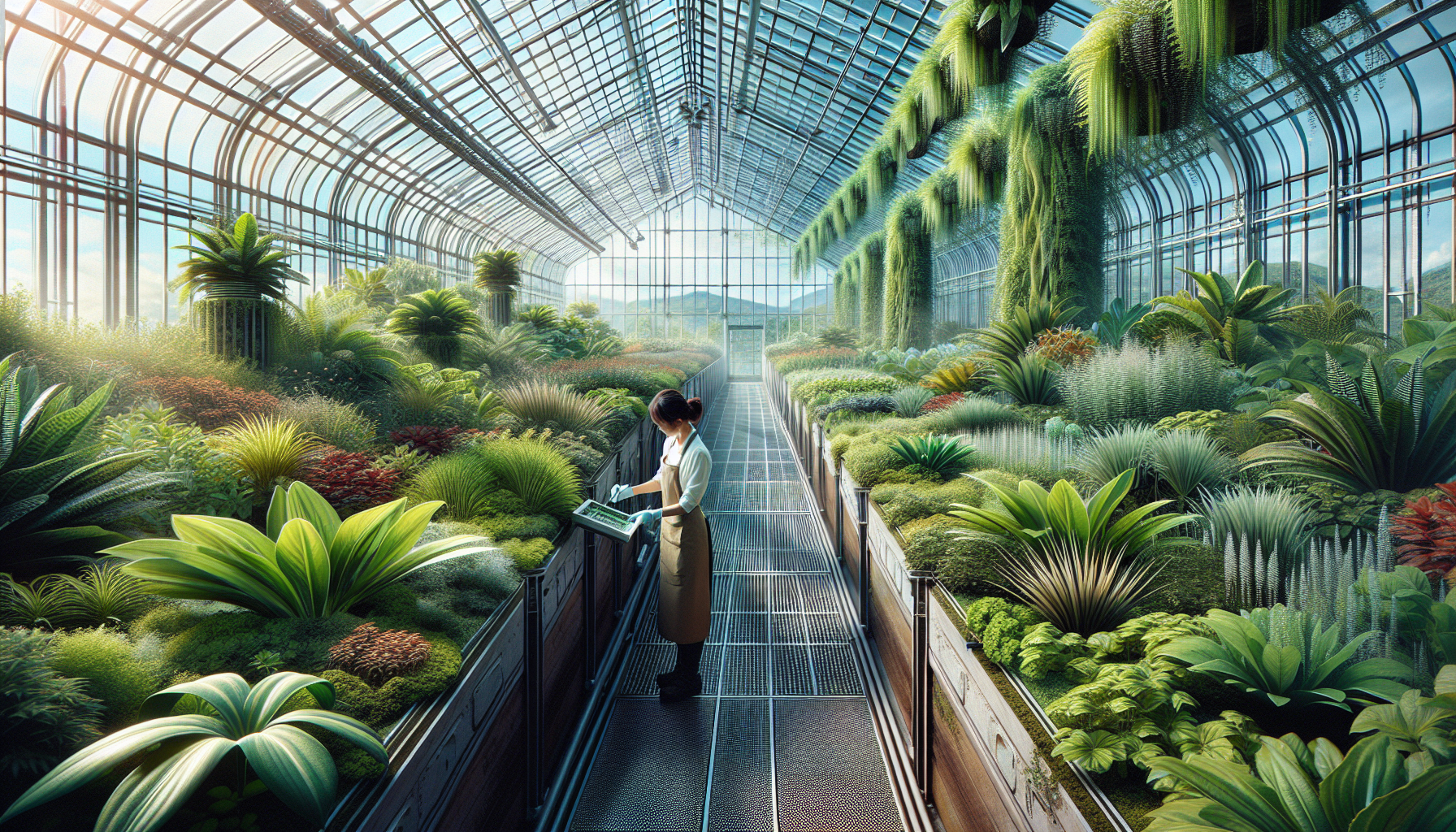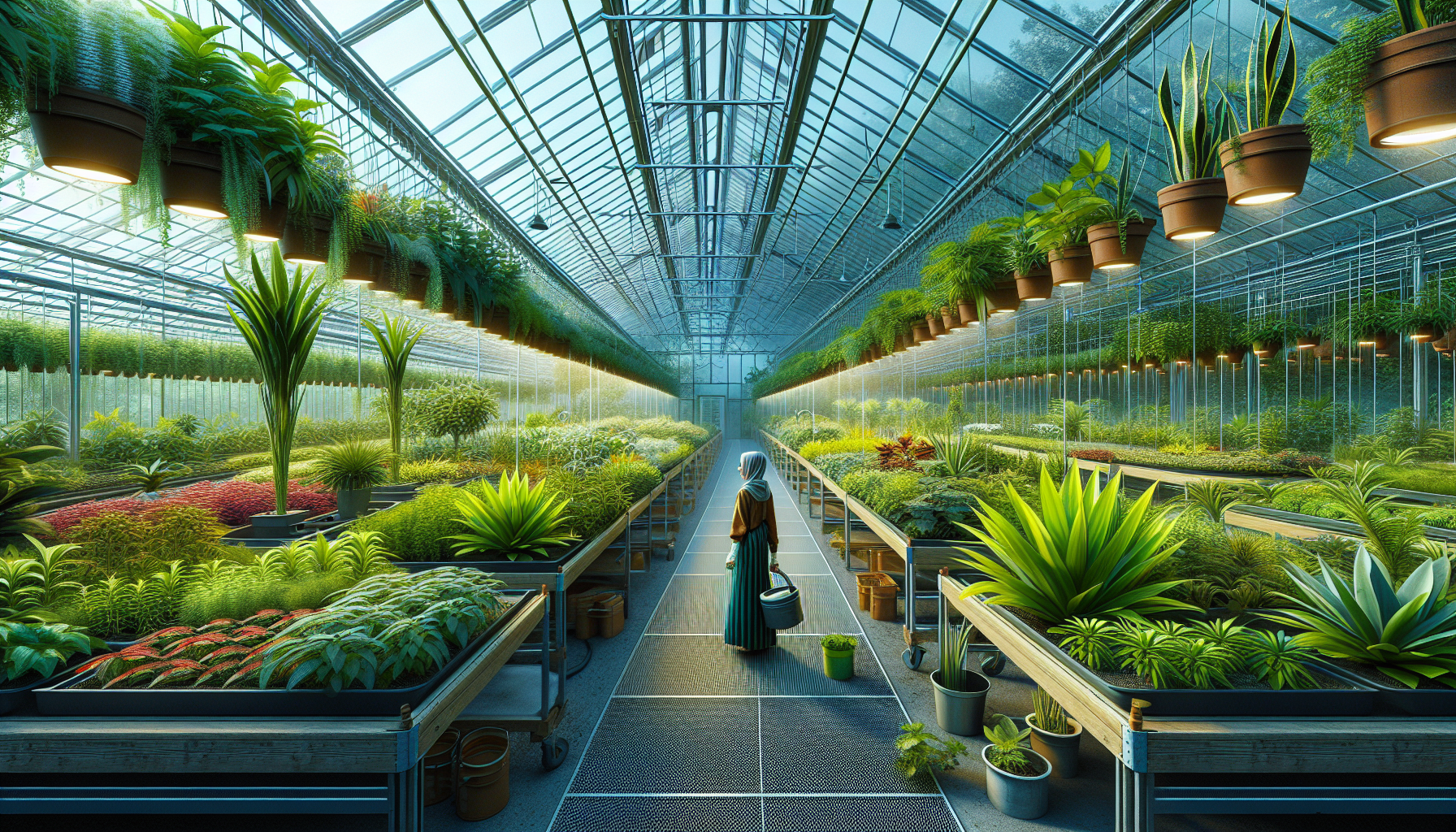
You’re about to embark on a fascinating journey into the world of Greenhouse gardening in New Zealand. This article will help you uncover everything you need to know about this rewarding and sustainable practice, from the basics to the more intricate details. Here, you will discover the best practices, benefits, challenges and the trends shaping greenhouse gardening in this beautiful corner of the world. It promises to be an educational and engaging read for anyone with a green thumb or an interest in sustainable living!

Understanding Greenhouse Gardening in New Zealand
Greenhouse gardening is a trend that is undeniably popular, and New Zealand is no exception to this. It offers a locale with the potential and desire for growth in this amazing field of agriculture.
Definition of Greenhouse Gardening
Greenhouse gardening refers to the practice of growing plants within a structure made predominantly of transparent material. This structure, the greenhouse, creates an environment that simulates the positive aspects of a natural one but provides control over the key growth factors. These include light, temperature, humidity, and pests.
History and Evolution in the New Zealand Context
In New Zealand, the practice traces its roots back to the European settlers who brought the concept with them. Over the years, New Zealand’s gardening methods have evolved, incorporating state-of-the-art technologies and sustainable practices. Greenhouses have particularly transformed from basic glass structures to more sophisticated styles and materials.
The Role of Greenhouse Gardening in NZ’s Agriculture
Greenhouse gardening plays a significant role in New Zealand’s agricultural sector. They allow for year-round planting and harvesting of crops, boosting yield and profits for farmers. They also play a role in protecting delicate crops from harsh weather, increasing plant survival rate, which is crucial for the country’s economy and food supply.
Climatic Considerations for Greenhouses
A successful greenhouse in New Zealand doesn’t ignore the climate – instead, it thrives in it.
Overview of New Zealand Climate Zones
New Zealand has a range of climatic zones due to its North-South orientation. From subtropical in the North to temperate in the South, and with subalpine environments in certain high-altitude areas. Each region with its unique climate will impact the type, design, and management of greenhouses employed.
Adapting Greenhouse Designs to Local Weather Conditions
Adapting greenhouse design to local weather conditions is crucial in New Zealand. In colder regions, insulated materials and heating systems are essential. For warmer, humid areas, proper ventilation and coolants may be needed.
Managing Microclimates within Greenhouses
Taking charge of the greenhouse’s microclimate is an integral part of maintaining an ideal growing environment. This involves managing ventilation, temperature, humidity and light levels throughout the day and the changing seasons.
Types of Greenhouses Used in New Zealand
Driven by climatic diversity, an array of greenhouse types have sprung up in New Zealand.
Traditional Glass Greenhouses
Traditional Glass Greenhouses, made primarily from glass panels, are a common sight. They offer excellent light transmission and temperature regulation, making them ideal for a variety of crops.
Polytunnels and Hoop Houses
Polytunnels and Hoop houses, covered with a layer of durable plastic, are a popular and economical choice for their simplicity and affordability. Yet, they are quite efficient in temperature regulation, which works well for temperature-sensitive plants.
Innovative Greenhouse Materials and Structures
Innovation has paved the way to new materials and structures for greenhouses. Some use ‘smart glass’ that adjusts light transmission based on outside conditions, while others use twin-wall polyethylene, which retains heat better than traditional glass.
Selecting the Right Location
The proper positioning of your greenhouse can make all the difference in its productivity.
Assessing Sunlight and Orientation
The greenhouse should ideally be positioned where it will receive plenty of sunlight throughout the day. This ensures the plants get enough light and warm up during the winter. Orientation is also significant – a North-South orientation is generally preferred.
Wind Protection and Ventilation Needs
Proper ventilation is key to preventing overheating and maintaining air circulation. At the same time, wind protection is essential to avoid damage to the greenhouse and ensure stability.
Soil Quality and Drainage Considerations
The soil should be fertile, and proper drainage should be ensured. This prevents water-logging and fosters a healthy root system.

Greenhouse Crops and Plant Varieties
Greenhouses offer a world of possibilities when it comes to the type of plants you can grow.
Popular Vegetables and Fruits
Common vegetables grown include tomatoes, cucumbers, and capsicums. Also, greenhouse gardening enables the growth of out-of-season fruits like strawberries and raspberries.
Cultivating Exotic Plant Species
Greenhouses also allow for the cultivation of exotic plant species that wouldn’t otherwise thrive in New Zealand’s climate. This includes plants like vanilla, orchids, and certain types of citrus fruits.
Seasonal Planting and Crop Rotation
Through diligent planning and crop rotation, you can ensure your greenhouse is productive all year round. This ensures the soil remains fertile and reduces problems with pests and diseases.
Soil and Nutrition Management
The soil in your greenhouse is the foundation of your plant’s health.
Importance of Soil Composition and Structure
Maintaining the correct soil composition and structure is vital because it harbours the nutrients your plants need and holds the moisture they require. A good soil mixture is well-aerated, drains well, and is rich in organic matter.
Fertilization and Composting Strategies
Regular fertilization and composting ensure the soil remains rich in nutrients. This can be achieved with traditional composting methods or incorporating organic fertilizers.
Hydroponics and Soil-less Cultivation
Greenhouse technology has made it possible to grow plants via hydroponics – a soil-less cultivation method. This can be beneficial in decreasing diseases caused by soil organisms and minimizing water use.
Irrigation and Water Management
Efficient water management is the key to many successful greenhouses.
Efficient Watering Systems for Greenhouses
Incorporating systems like drip irrigation or misting can deliver water effectively to the plants, minimizing evaporation and runoff.
Rainwater Harvesting and Recycling
Rainwater harvesting provides an environmentally friendly source of water. Rainwater is free from chemicals and runs directly into irrigation systems, reducing dependence on tap water.
Moisture Control and Plant Hydration
Maintaining the right level of moisture in the greenhouse is critical for plant health. Too much can cause plant diseases, while too little can cause wilting.
Pest Control and Disease Management
Pests and diseases pose a significant risk to the health and productivity of your greenhouse.
Common Pests in New Zealand Greenhouses
Pests common to New Zealand greenhouses include aphids, whiteflies, and slugs. Recognizing and responding to these threats promptly ensures less damage.
Biological and Organic Pest Control Methods
Biological methods such as using beneficial insects or biological pesticides are a popular choice. Organic methods, like homemade sprays, pest-deterrent plants, and organic pesticides, are also effective.
Preventative Measures and Integrated Pest Management
Prevention is always better than cure. Implementing a thorough pest control strategy involving regular checks, maintaining cleanliness, and practicing proper plant care can greatly reduce your greenhouse’s susceptibility to pests.
Technology Integration in Greenhouse Gardening
Technology has a significant role in the evolution of greenhouse gardening in New Zealand.
Automation and Smart Greenhouse Systems
Automation technologies have made it possible to control critical factors such as temperature, light intensity, and humidity with high precision. This not only makes gardening easier but can greatly improve the quality and quantity of the produce.
The Role of Data and Analytics in Greenhouse Management
Data and analytics are now used to predict trends, yield, and potential issues. This helps in better decision-making and improving the efficiency of operations.
Emerging Technologies in Controlled Environment Agriculture
Emerging technologies in fields like artificial intelligence and remote sensing are now making their way into greenhouses. These can potentially revolutionize how greenhouses are managed and operated.
Case Studies and Success Stories
There are several interesting success stories and case studies from greenhouse entrepreneurs and operations in New Zealand.
Innovative Greenhouse Operations in NZ
Innovative operations such as geothermal greenhouses and vertical farming are gaining traction and transforming the agriculture landscape in New Zealand with their sustainable and highly productive models.
Impact Stories from Greenhouse Entrepreneurs
Many greenhouse entrepreneurs have shared stories of success, from cultivating unique crops to implementing innovative technologies. Their experiences demonstrate the vast potential of greenhouse gardening in New Zealand.
Research Contributions to Global Greenhouse Practices
New Zealand’s research in greenhouse practices has significantly contributed to the global understanding and development of greenhouse farming. This includes advancements in areas like energy efficiency, crop yield maximization, and sustainable practices.
Understanding and adopting this knowledge about greenhouse gardening in New Zealand can be highly beneficial for anyone looking to explore agriculture in this sustainable and efficient manner. As the adage goes, “The best time to plant a tree was 20 years ago. The second-best time is now.” Start your greenhouse journey today!

